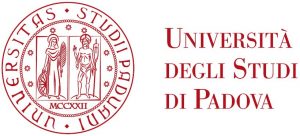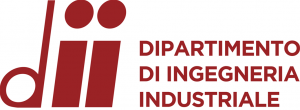List of Journal Publications
2014
1.
Zhang, Yunhe, Gao, Yanfei, Nicola, L.
Lattice rotation caused by wedge indentation of a single crystal: Dislocation dynamics compared to crystal plasticity simulations Journal Article
In: JOURNAL OF THE MECHANICS AND PHYSICS OF SOLIDS, vol. 68, no. 1, pp. 267–279, 2014.
Abstract | BibTeX | Tags: discrete dislocation plasticity, Dislocation sources and obstacles, Indentation size effects, Lattice rotation fields | Links:
@article{Zhang2014a,
title = {Lattice rotation caused by wedge indentation of a single crystal: Dislocation dynamics compared to crystal plasticity simulations},
author = {Yunhe Zhang and Yanfei Gao and L. Nicola},
doi = {10.1016/j.jmps.2014.04.006},
year = {2014},
date = {2014-01-01},
journal = {JOURNAL OF THE MECHANICS AND PHYSICS OF SOLIDS},
volume = {68},
number = {1},
pages = {267–279},
publisher = {Elsevier Ltd},
abstract = {A number of recent experimental efforts such as electron back scattering technique and three-dimensional X-ray structural microscopy have revealed the intriguing formation of sectors of lattice rotation fields under indentation. In the case of wedge indentation, the in-plane rotation changes sign from one sector to another. Although the lattice rotation fields can be used to compute the geometrically necessary dislocation (GND) densities, it remains unclear how these sectors can be related to the hardness and therefore to the indentation size effects, i.e., the increase of indentation hardness with the decrease of indentation depth. Crystal plasticity simulations in this work reproduce the experimental findings at large indentation depth. On the contrary, discrete dislocation plasticity can only capture the sectors found experimentally when there is a high obstacle density and large obstacle strength. Obstacle density and strength, however, have little effect on the hardness. In other words, there is no one-to-one correspondence between the lattice rotation patterns and the indentation size effects. The presence of obstacles favors the dislocation arrangements that lead to the experimentally found rotation sectors. Using the similarity solutions of indentation fields and the solution of localized deformation fields near a stationary crack, a simple model is developed that explains the dislocation pattern evolution, its relationship to the lattice misorientations, and more importantly its dependence on obstacles.},
keywords = {discrete dislocation plasticity, Dislocation sources and obstacles, Indentation size effects, Lattice rotation fields},
pubstate = {published},
tppubtype = {article}
}
A number of recent experimental efforts such as electron back scattering technique and three-dimensional X-ray structural microscopy have revealed the intriguing formation of sectors of lattice rotation fields under indentation. In the case of wedge indentation, the in-plane rotation changes sign from one sector to another. Although the lattice rotation fields can be used to compute the geometrically necessary dislocation (GND) densities, it remains unclear how these sectors can be related to the hardness and therefore to the indentation size effects, i.e., the increase of indentation hardness with the decrease of indentation depth. Crystal plasticity simulations in this work reproduce the experimental findings at large indentation depth. On the contrary, discrete dislocation plasticity can only capture the sectors found experimentally when there is a high obstacle density and large obstacle strength. Obstacle density and strength, however, have little effect on the hardness. In other words, there is no one-to-one correspondence between the lattice rotation patterns and the indentation size effects. The presence of obstacles favors the dislocation arrangements that lead to the experimentally found rotation sectors. Using the similarity solutions of indentation fields and the solution of localized deformation fields near a stationary crack, a simple model is developed that explains the dislocation pattern evolution, its relationship to the lattice misorientations, and more importantly its dependence on obstacles.


